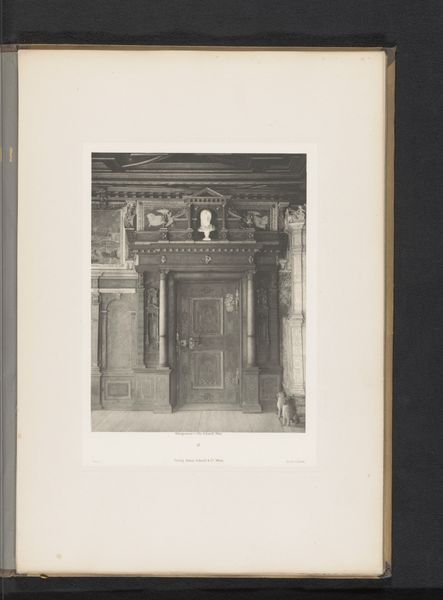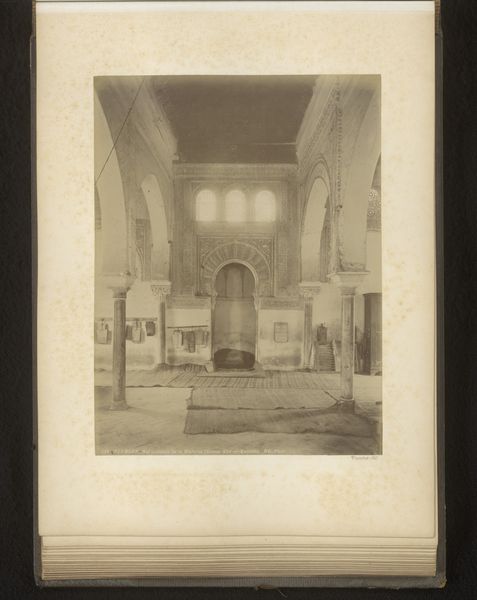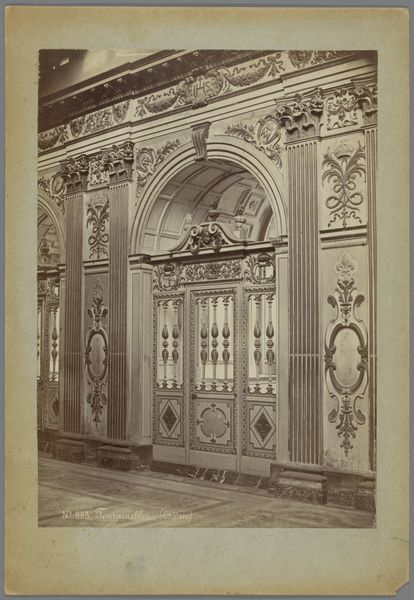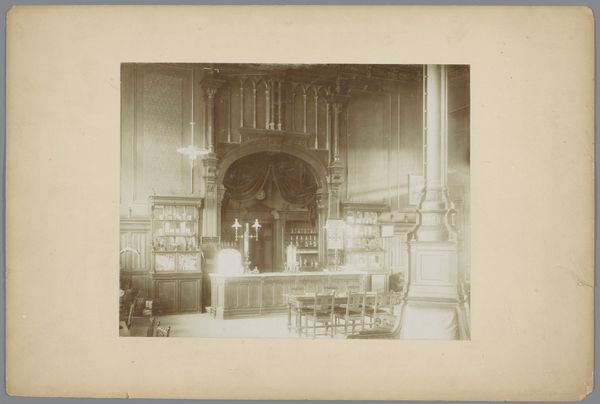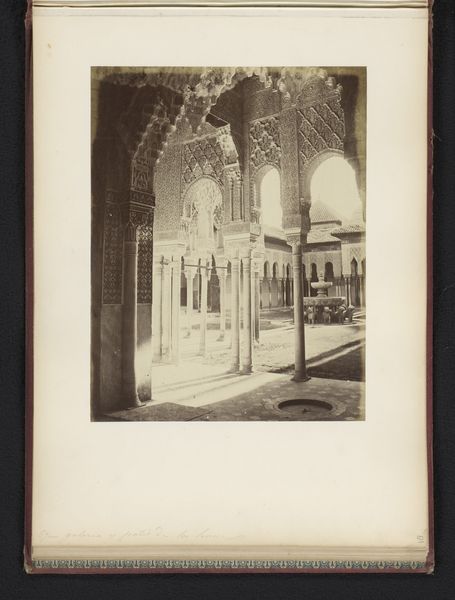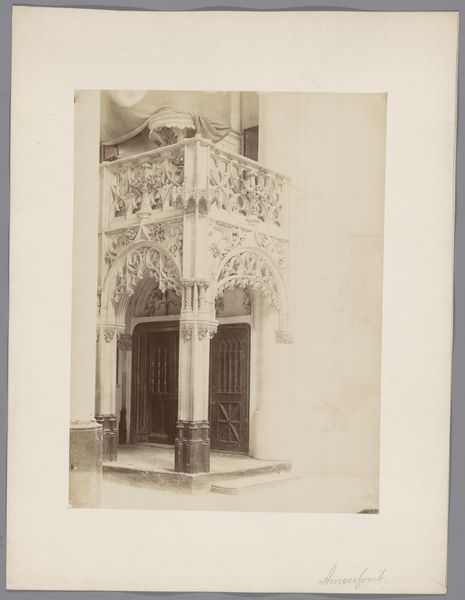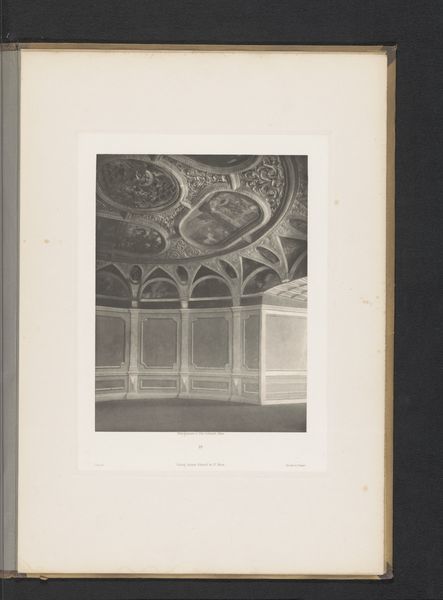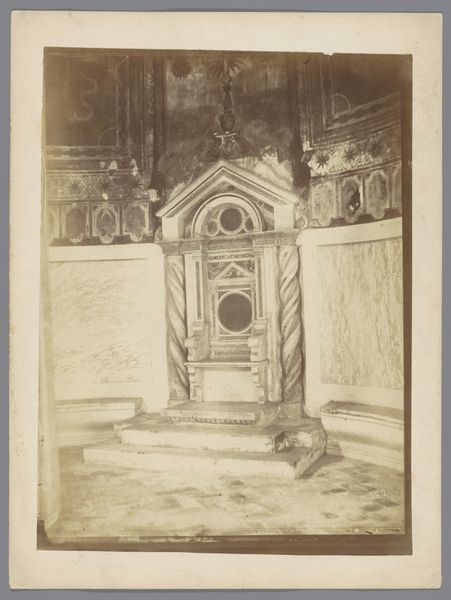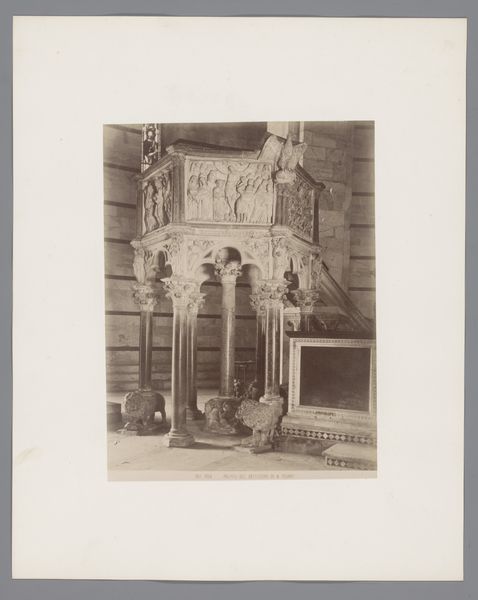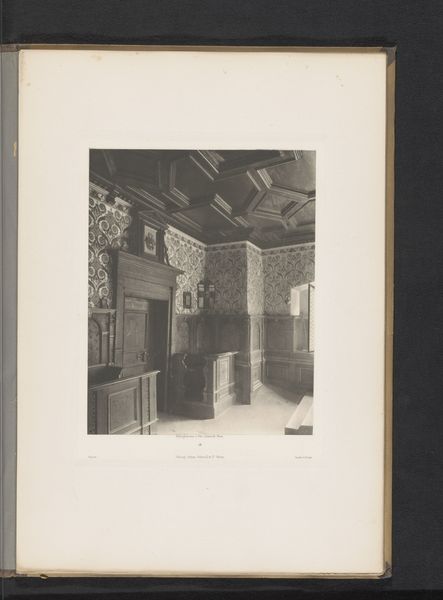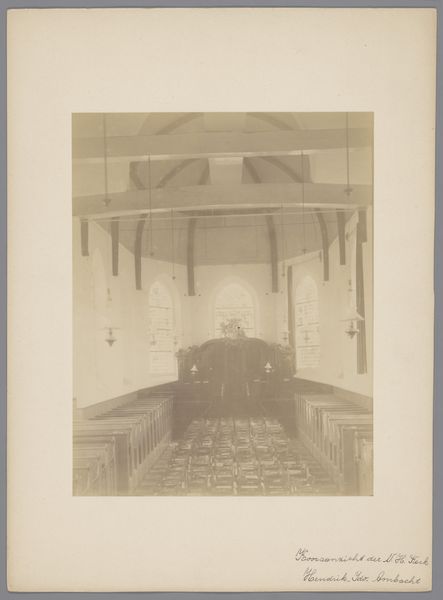
photography
#
landscape
#
photography
#
orientalism
#
islamic-art
Dimensions: height 273 mm, width 203 mm
Copyright: Rijks Museum: Open Domain
Editor: Here we have Étienne Neurdein’s photograph, “Interior of the Great Mosque of Tlemcen,” taken sometime between 1880 and 1900. It's fascinating to see the intricate details captured in this old photograph. How would you interpret this work, particularly within its historical context? Curator: This photograph operates within the complicated sphere of Orientalism. Neurdein, a European photographer, captures a vision of the 'Orient' – North Africa in this case – for a European audience. How do you think that shapes the image itself? Editor: It definitely feels like it’s presenting a romanticized view, focusing on the aesthetic and architectural details but maybe missing the social complexities of the time. Curator: Exactly. It’s important to ask: Who is being represented, and for whom? These images helped to solidify European perceptions and, at times, misperceptions about the cultures they depicted. We also need to think about how power dynamics shaped these representations, particularly colonial power. This photograph isn’t simply a neutral document; it's a construction of the 'Other.' Does this make you question photography's ability to represent truthfully? Editor: It does. It makes me think about whose gaze is behind the camera and how that impacts what's being shown, and not shown. I now see it as a historical document and a product of its time, showing a specific point of view more than objective truth. Curator: Precisely. And that critical awareness is crucial when engaging with historical artworks and photographs like this.
Comments
No comments
Be the first to comment and join the conversation on the ultimate creative platform.
